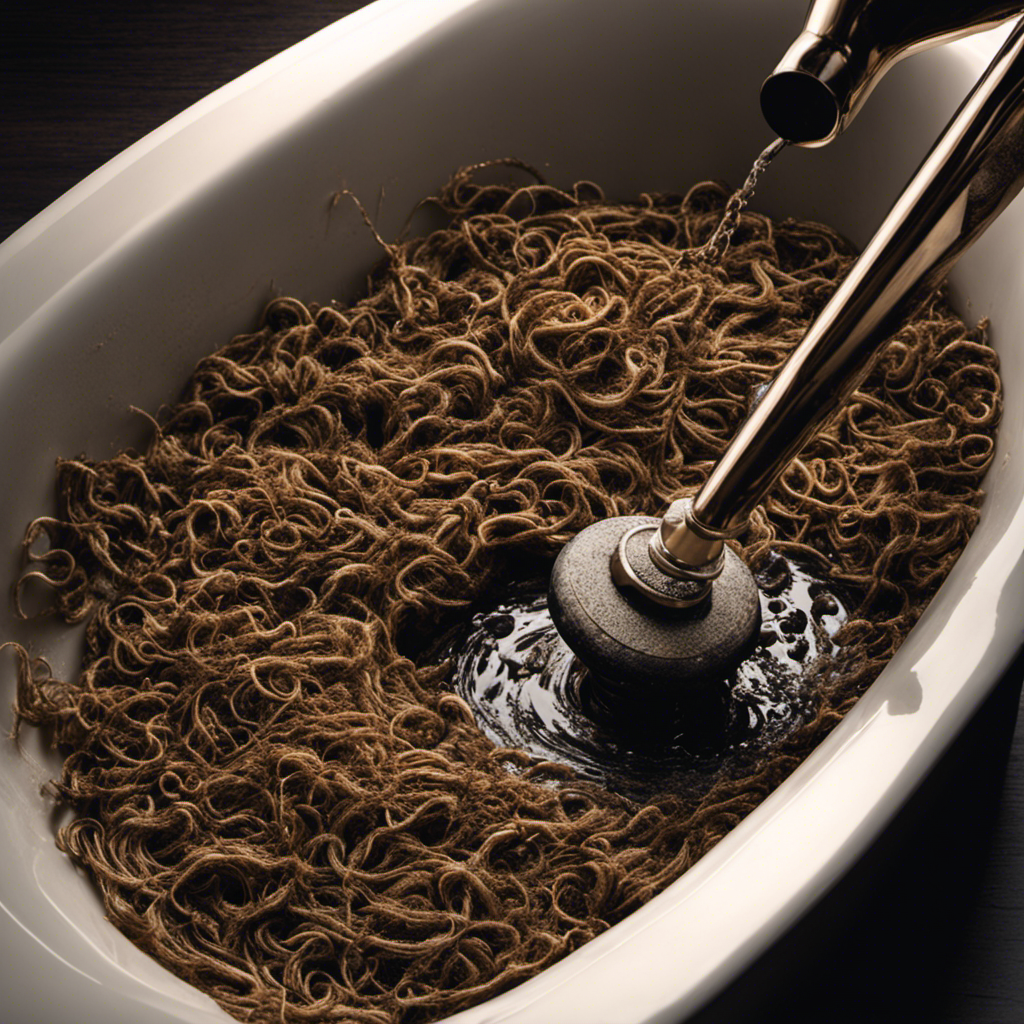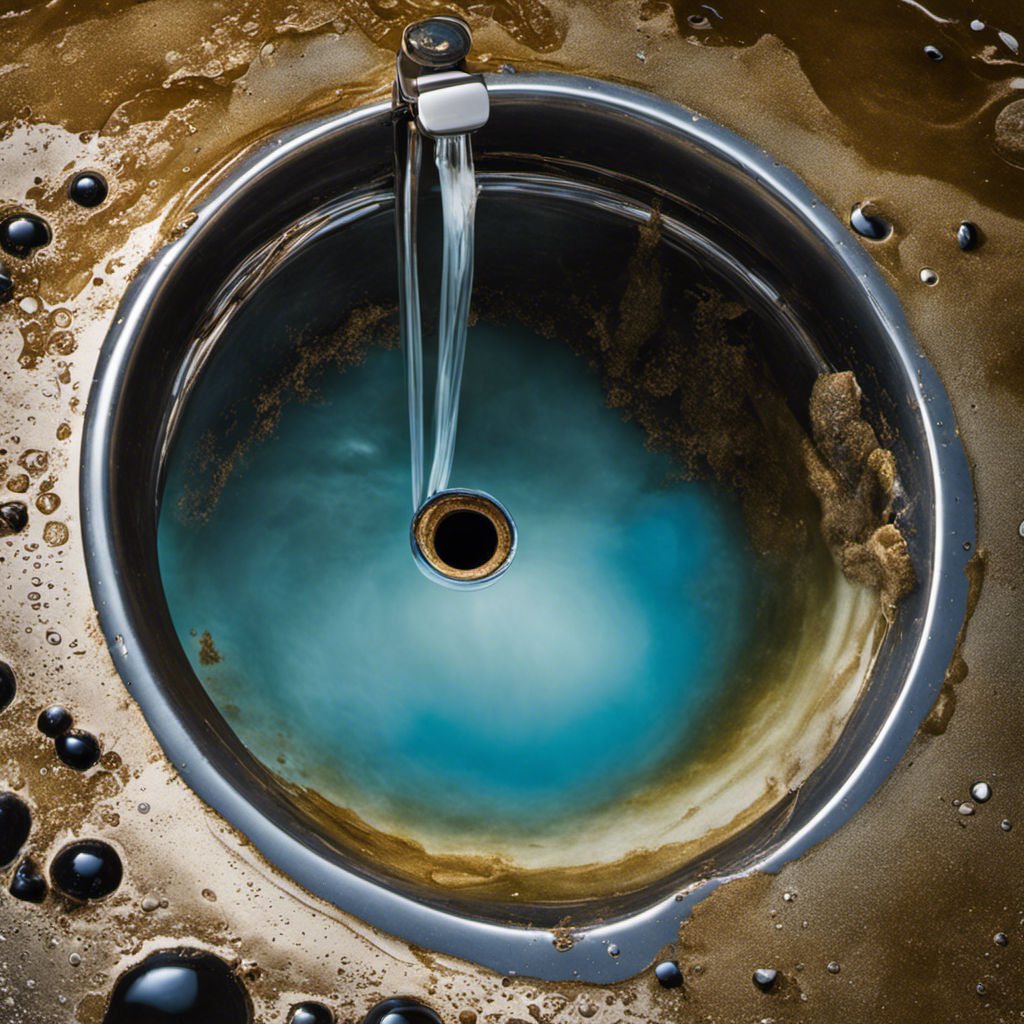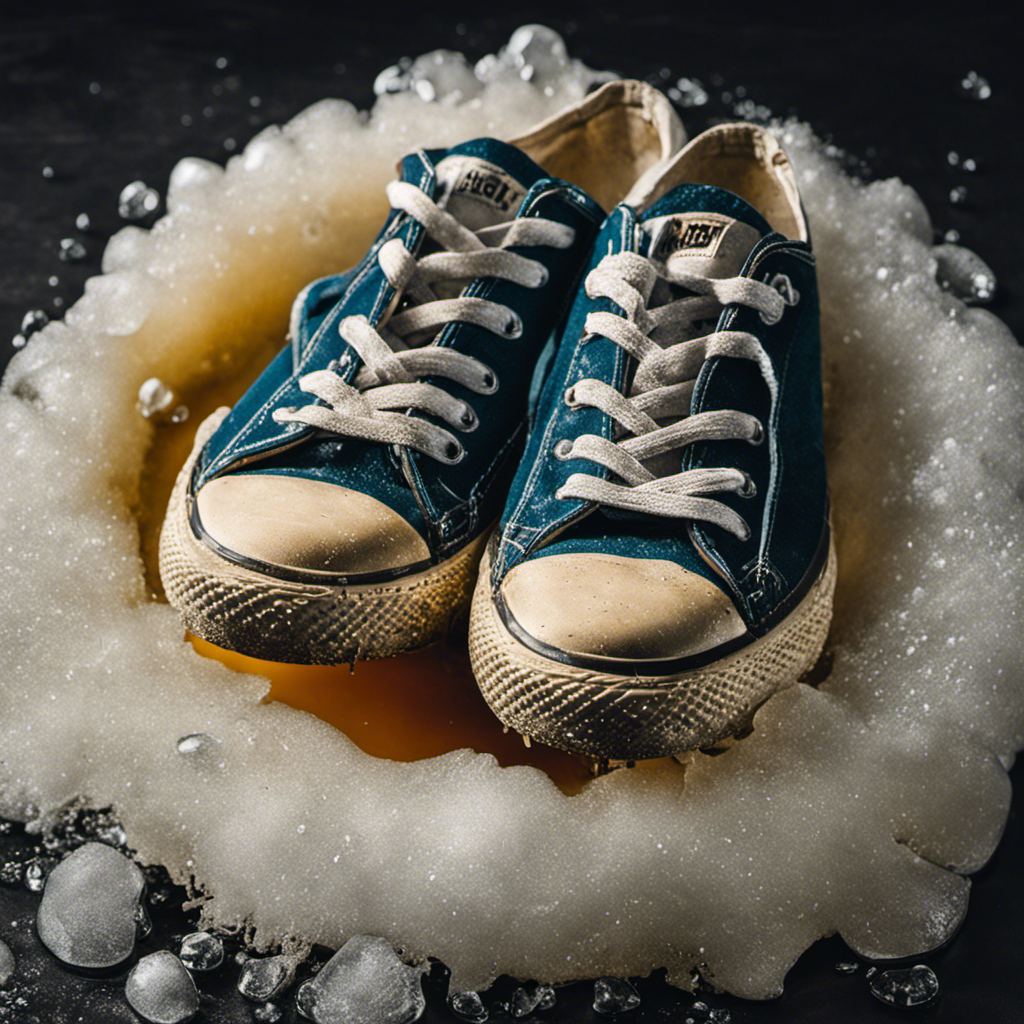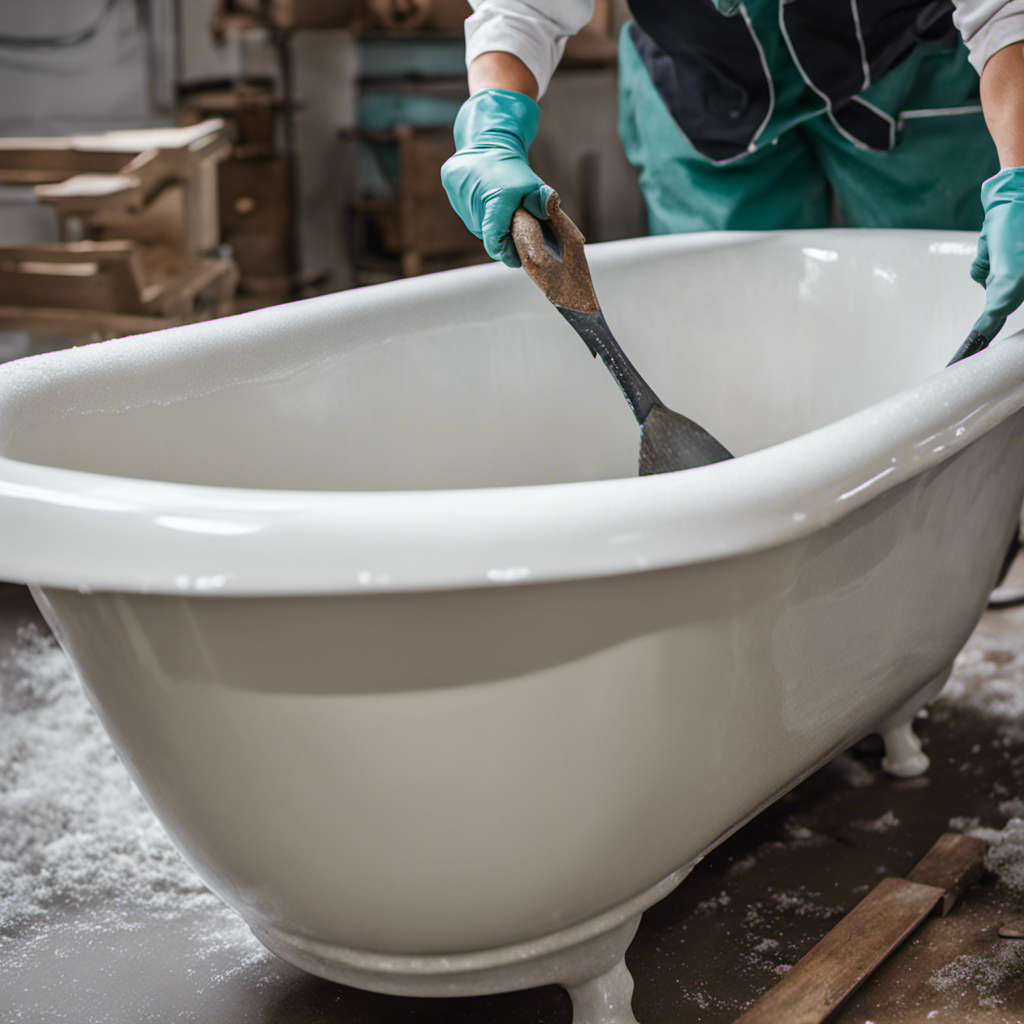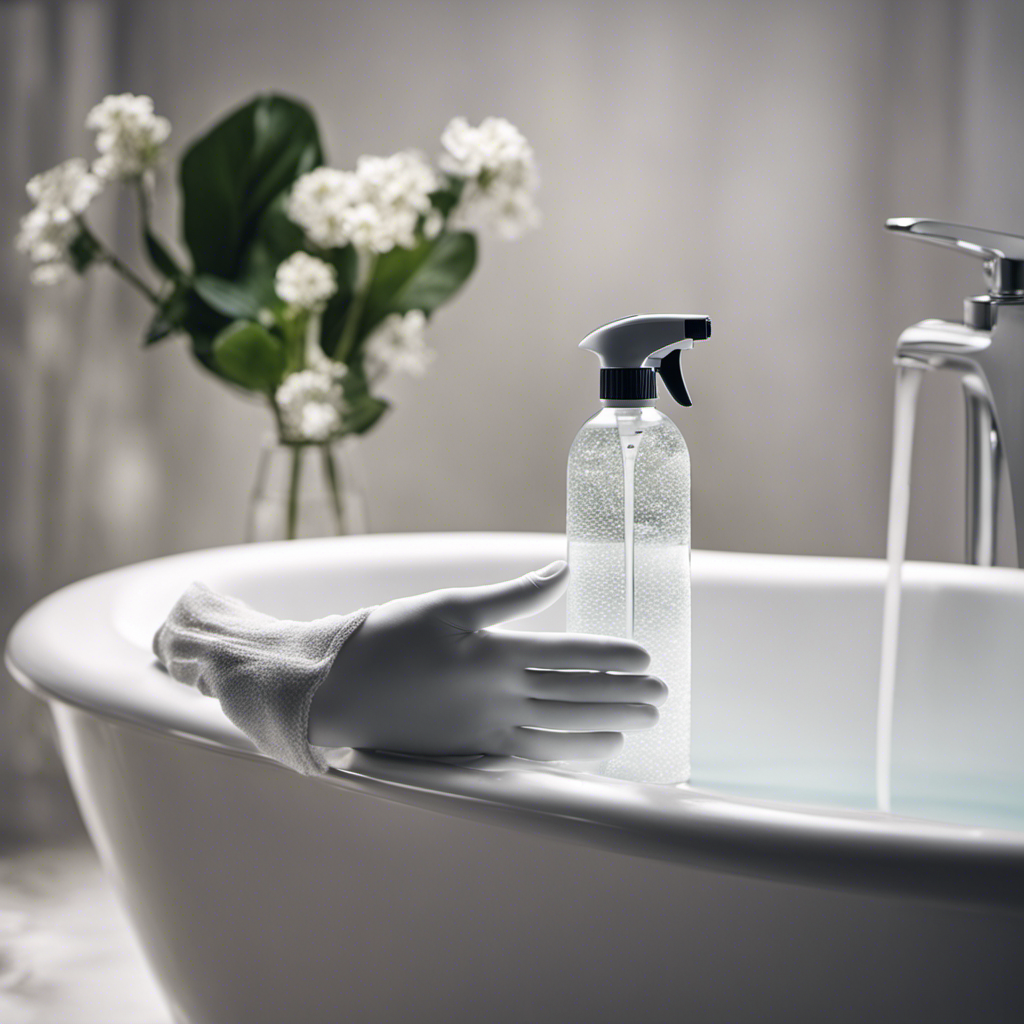Hey there, folks! Did you know that clogged bathtub drains are a common household nuisance?
Well, fear not, because I’ve got just the solution for you. In this article, I’ll walk you through the step-by-step process of fixing that pesky clog in your bathtub drain.
From identifying the cause of the clog to using DIY methods and even when to call in the professionals, we’ve got you covered.
So, let’s dive right in and get that drain flowing smoothly again!
Key Takeaways
- Hair removal and soap residue are common causes of bathtub drain clogs.
- Using a plunger is an effective method to clear the drain.
- Alternative methods include using a drain snake or chemical drain cleaners.
- Preventive measures such as regular drain cleaning and using drain screens can help avoid future clogs.
Identifying the Cause of the Clog
Now, it’s time for me to figure out what’s causing the clog in my bathtub drain.
The two common culprits for bathtub drain clogs are hair removal and soap residue. Hair can easily get caught in the drain, forming a blockage over time. Soap residue, on the other hand, can build up and stick to the walls of the pipe, narrowing the passage for water to flow through.
To identify the cause of the clog, I will need to remove the drain cover and visually inspect the drain. If I see strands of hair or an accumulation of soap residue, I can be certain of the cause.
Once I have identified the cause, I can proceed to the next step of fixing the clog.
Using a Plunger to Clear the Drain
When it comes to clearing a stubborn clog in a drain, using a plunger can be an effective technique. The plunger creates a vacuum that helps to dislodge the blockage and allows water to flow freely again.
However, if the plunger technique doesn’t work, there are alternative drain-clearing methods that can be tried. These include using a drain snake or chemical drain cleaners.
To prevent future clogs, it is important to implement preventive measures. These measures include regular drain cleaning, using drain screens, and avoiding pouring grease or oil down the drain.
Plunger Technique Effectiveness
To unclog your bathtub drain effectively, try using a plunger. The plunger technique is a popular and effective method for clearing clogs in drains.
However, if you don’t have a plunger or if the technique doesn’t work for you, there are alternatives you can try.
One alternative is using a drain snake or auger. This tool can reach deep into the drain and dislodge any stubborn clogs.
Another alternative is using a mixture of baking soda and vinegar. Simply pour the baking soda down the drain, followed by the vinegar, and let it sit for a few minutes. Finally, flush the drain with hot water.
When using the plunger technique, make sure to create a tight seal around the drain and use quick, forceful plunges to dislodge the clog. Additionally, applying petroleum jelly to the plunger’s rim can help create a better seal.
Alternative Drain-Clearing Methods
If you don’t have a plunger, you can try using a drain snake or auger as an alternative method to clear the clog. These tools are commonly used for unclogging drains and can be effective in removing blockages.
Here’s a step-by-step guide on how to use a drain snake or auger:
- Start by inserting the snake or auger into the drain opening.
- Push the tool down the drain, twisting it as you go to break up the clog.
- Keep pushing and twisting until you feel resistance or the clog starts to break apart.
- Once you’ve reached the clog, pull the snake or auger back out, taking care to remove any debris that may have been dislodged.
- Repeat the process if necessary until the drain is clear.
While these alternative methods can be effective, it’s important to note that for severe clogs or recurring issues, it may be best to seek professional drain cleaning services. Natural remedies like baking soda and vinegar can also be used in conjunction with these methods for added effectiveness.
Preventive Measures for Clogs
One effective way to prevent clogs is by regularly cleaning out your drains and removing any debris. By doing this simple maintenance task, you can ensure that water flows smoothly through your pipes and avoid the hassle of dealing with clogged drains. Additionally, using hair catchers in your bathtub or shower can help prevent hair and other small particles from going down the drain and causing blockages. Hair catchers are easy to install and can be found at most hardware stores or online. Simply place the hair catcher over the drain opening and clean it out regularly to remove any trapped hair or debris. By incorporating regular cleaning and using hair catchers, you can keep your drains clog-free and maintain the proper functioning of your plumbing system.
| Benefits of Regular Cleaning and Hair Catchers | Steps to Maintain Clog-Free Drains |
|---|---|
| Prevents clogs and blockages | 1. Remove any visible debris from the drain surface |
| Keeps water flowing smoothly | 2. Use a drain cleaner product to dissolve any buildup |
| Reduces the need for expensive plumbing repairs | 3. Flush the drain with hot water to clear any remaining residue |
| Easy and affordable maintenance | 4. Install a hair catcher in your bathtub or shower drain |
DIY Methods for Clearing a Clogged Bathtub Drain
You can try using a plunger to clear the clogged bathtub drain.
First, make sure the plunger has a good seal around the drain.
Fill the tub with a little water to cover the rubber part of the plunger.
Then, vigorously plunge up and down for about a minute.
If this doesn’t work, try using a natural drain cleaner.
Mix equal parts baking soda and vinegar in a bowl and quickly pour it down the drain.
Let it sit for about 30 minutes.
Next, pour boiling water down the drain to flush out any remaining debris.
If the clog persists, you may need to use a drain snake or call a professional plumber.
Using a Drain Snake to Remove the Clog
Using a drain snake is an effective method to remove the clog. It is a versatile tool that can be used for clearing clogs in sinks, tubs, and showers. The main advantage of using a drain snake is its ability to break up and remove stubborn clogs.
When using a drain snake, you insert the auger end into the drain pipe and rotate the handle to break up the clog. The auger’s corkscrew-like design helps to grab onto the debris and pull it out.
However, there are some alternatives to using a drain snake. One alternative is using a plunger, which can be effective for smaller clogs. Another alternative is using chemical drain cleaners, but they can be harsh on pipes and harmful to the environment.
Overall, the pros of using a drain snake include its effectiveness and versatility, while the cons include the need for physical effort and the possibility of damaging pipes if used incorrectly.
Chemical Solutions for Unclogging the Drain
After trying a drain snake to remove the clog in my bathtub drain, I decided to explore chemical solutions as an alternative. Chemical solutions can be effective in breaking down stubborn clogs and clearing the drain. However, I wanted to find natural remedies that are safe for the environment and my family. That’s when I discovered enzymatic cleaners.
Enzymatic cleaners are a great eco-friendly option for unclogging drains. They use natural enzymes to break down organic matter, such as hair and soap scum, without causing any harm. These cleaners are easy to use and require minimal effort. Simply pour the recommended amount of enzymatic cleaner down the drain, let it sit for a specified time, and then flush it out with hot water.
Here is a table highlighting some popular enzymatic cleaners and their key features:
| Brand | Key Features |
|---|---|
| Bio-Clean | Non-toxic, biodegradable, and safe for all pipes |
| Green Gobbler | Fast-acting, odorless, and safe for septic systems |
| Earthworm | Made with natural enzymes, safe for pets and children |
Preventive Measures to Avoid Future Clogs
To prevent future clogs in your drains, it is important to follow a few preventive measures.
First, regular drain maintenance is crucial. This involves flushing your drains with hot water and a mixture of vinegar and baking soda to remove any accumulated debris.
Secondly, proper hair disposal is essential. Make sure to use a drain strainer to catch any hair before it goes down the drain.
Lastly, it is important to avoid grease build-up by not pouring any greasy substances down the drain. Instead, dispose of grease in a separate container and throw it in the trash.
Regular Drain Maintenance
Regular drain maintenance is important to prevent clogged bathtub drains. As someone who has dealt with plenty of clogs in the past, I have learned the importance of regular cleaning and bathtub maintenance. Here are some key steps to keep your drains running smoothly:
- Use a drain strainer to catch hair and other debris.
- Clean the drain stopper regularly to remove any buildup.
- Flush your drains with hot water once a week to clear out any residue.
- Avoid pouring grease or oil down the drain, as they can solidify and create clogs.
- Use a drain cleaner or a mixture of vinegar and baking soda to break down any stubborn clogs.
Proper Hair Disposal
When it comes to disposing of hair properly, remember to always throw it in the trash instead of letting it go down the drain. Proper hair care is essential for preventing clogged drains and costly repairs. Hair is a common culprit for blockages, as it easily tangles and clumps together, obstructing the flow of water. To emphasize the importance of proper hair disposal, consider the following table:
| Hair Disposal Do’s | Hair Disposal Don’ts |
|---|---|
| ✅ Throw in the trash | ❌ Flush down the toilet |
| ✅ Use a hair catcher | ❌ Let it go down the drain |
| ✅ Dispose after grooming | ❌ Leave it on the floor |
In addition to proper hair disposal, using the best drain cleaning products can help maintain a healthy drain system. Look for products specifically designed to break down hair and prevent clogs. These products typically contain enzymes or chemicals that dissolve hair and other organic matter. By following these steps and taking care of your hair properly, you can avoid unnecessary drain blockages and keep your plumbing system running smoothly.
Now let’s move on to the next section about avoiding grease build-up.
Avoid Grease Build-Up
If you want to prevent grease build-up in your pipes, make sure to avoid pouring cooking oil or fat down the drain. Grease can solidify and accumulate over time, leading to clogged drains and costly repairs.
To keep your pipes running smoothly, consider the following tips:
-
Install grease traps: These devices capture grease and solid particles, preventing them from entering the drain system.
-
Use natural drain cleaners: Instead of relying on harsh chemicals, opt for natural alternatives such as baking soda and vinegar. These can help break down grease and keep your drains clean.
-
Regular maintenance: Schedule routine inspections and cleanings to remove any built-up grease and ensure proper functioning of your pipes.
-
Dispose of grease properly: Allow grease to cool and solidify before disposing of it in a sealed container or the trash.
-
Educate household members: Teach everyone in your home about the importance of avoiding pouring grease down the drain to prevent clogs and maintain a healthy plumbing system.
When to Call a Professional for Help
Sometimes, you might need to call a professional if your clogged bathtub drain is too difficult to fix on your own. While it’s great to tackle minor clogs yourself, there are certain signs that indicate a severe clog that requires expert help.
One sign is if multiple drains in your home are backing up simultaneously. This could indicate a main sewer line blockage, which is best handled by a professional plumber.
Another sign is if you’ve tried various DIY methods, such as using a plunger or drain snake, but the clog persists. This could indicate a deeper issue within the plumbing system, which requires specialized tools and knowledge to resolve.
Lastly, if you notice foul odors coming from the drain or water pooling around the bathtub, it’s a sign that the clog is severe and needs professional attention.
Conclusion
In conclusion, fixing a clogged bathtub drain can be a frustrating task. However, with the right knowledge and tools, it can be easily resolved.
By identifying the cause of the clog and using methods such as plunging, DIY solutions, or utilizing a drain snake, you can effectively get rid of the blockage.
However, it is important to note that chemical solutions should be used with caution. Taking preventive measures, such as using drain covers and regular maintenance, can help avoid future clogs.
Remember, 90% of bathroom floods are caused by clogged drains, so it’s crucial to address the issue promptly to prevent any water damage.
